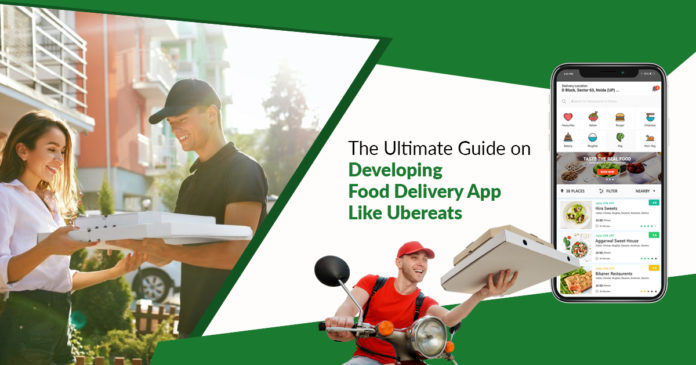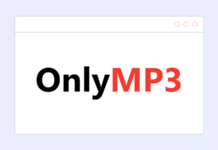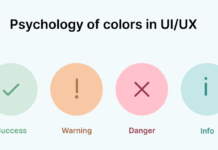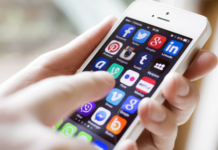The advent of smartphones has disrupted the functioning of every possible industry. People can demand what they need and have access to millions of services offered online. The food delivery industry is not an exception. Restaurants are gaining profits through these food delivery platforms. Food delivery platforms like UberEats, Grubhub have all capitalized in this business venture. People order foods from their favorite restaurants across the cities and get them delivered at their doorsteps. People needn’t fill the gas of the car or commute to a crowded train to eat their favorite dishes. A single tap can make delivery professionals ring the doorbell at their doorsteps.
So, what does it take to develop a food delivery app? How much does it cost to create one? How profitable is the market? How is revenue earned in this industry? What are the essential features to develop the app?
The answer to all these questions are discussed here.

The Growing Market of Food delivery services:
Let us discuss some facts before arriving at a decision.
- According to Sesame token, the food delivery currently generates revenue of $95.64 Billion.
- 42% of the Overall food ordering market is made online.
- Annually, the food delivery sector grows by a rate of 15-20%.
- The online food delivery market can reach a potential value of $200 Billion by 2025.
- According to Allied Market Research, the market for Food delivery apps alone is expected to hit a whopping $16.6 billion by 2023.
- Growth as high as 28% is expected out of this food delivery apps market.
The market for these food delivery services is booming exponentially. Demand in the market could mean people are still searching and optimizing. Your app can be the next big thing in town.

Revenue generated by these apps:
The next major doubt that pops up in the minds of business owners would be how revenue is generated by these online platforms. The revenue is generated in different forms as,
- Partnering with restaurants: For every order placed to the restaurant via the app, the app receives a part of the payment as commission. This way, restaurant owners are satisfied that they get more orders, and the users also enjoy doorstep food delivery. The charge may vary between 15% to 40% depending on the restaurants and online platforms.
- Delivery Fee: This business venture also provides jobs to delivery professionals. When a delivery professional completes a food delivery, he/she is entitled to give a part of their payment as commission to the business venture. A flat delivery fare or delivery fares based on the distance can be charged and collected.
- Commercials in the App: In-app commercials are provided by these online platforms. These platforms can charge a fee as a marketing fee to display advertisements in the app.

Identifying the App Model:
This stage involves the business that the owner is intended to carry out. There are two types of food delivery model. They are,
- Order-only Model: In this model, the company is responsible for managing the orders alone. The company needn’t worry about the different parts of the service, like cooking and food delivery.
- Order and Delivery Model: In this model, the company is completely responsible for the order and delivery of food services. Revenue generated by these types of models is generally very high than the former.
Choosing a business model for food delivery services depends entirely on the business owner. A thorough market study can help the business owner decide the type of model that is convenient, reliable as well as budget-friendly.
Development of a Food delivery App:
The food delivery apps can be developed in several ways. They can be developed by,
- Developing from Scratch: The food delivery app can be developed from scratch. Every aspect, including market study, analytics, food delivery development script, etc., can all be self-developed. The technical team is needed in this development style.
- Approaching an app development company: Another way of developing a food delivery app is by approaching an app development company. The company provides potential food delivery scripts to business owners. Customizations, according to their specifications, are also possible during this development style.
Stages involved in the development of the App:
- Food delivery script: A food delivery script is essentially a plot of how an app should work. The functionalities of the app are jotted down systematically in this stage of development.
- Features to be included: This is an important stage in development. Determining the features vastly aids in the sustainability of the app in the market. essential features that maintain and advanced features that boost the app build a highly efficient app for food delivery.
- Integration of the App: Once the script and features are ready, the development begins. Finally, the App is integrated across different digital platforms like Android and iOS.
Essential Features of the Users and Delivery Person App:
An UberEats clone is entitled to have some essential features for the Users.
- Registration: Users expect a single step registration. Registering across different social media platforms can be viable.
- Search: Users can search among diversified restaurants and foods present in the app.
- Order placing: Users can place orders in any restaurant of their choice in their locality. A detailed bill summary is provided to users before placing the order.
- Payment: Users can pay via multiple payment platforms, including credit, debit cards, and different digital wallets.
- Order Tracking: A real-time navigation facility can help users track their orders instantly. They also know the estimated time of delivery professional’s arrival.
- In-app chat facilities: Users can directly communicate with the delivery professional about the queries and suggestions regarding the order. This feature can greatly benefit users.
- Push Notifications: Notifications can provide quality insights about the status of the order to the users. Users needn’t open the app every time to enquire about the delivery. Push notifications can inform users instantly.
- Ratings and Reviews: Users can rate the quality of food as well as the delivery person in the app in the form of ratings. He/she can share his/her experience in the form of reviews as well.
The essential features of a Delivery Persons App include,
- Availability Toggle: Delivery persons can switch between their availability based on their interests through this toggle feature.
- Accept/ Reject requests: Delivery persons can accept/reject orders from users based on their interests.
- Push Notifications: Delivery persons needn’t look into the app every time. Push notifications enable them to access various services instantly.
In addition to these, monitoring of these services is done by an admin panel. Admin panel includes features like,
- Delivery Radius: This delivery radius visualizes the restaurants in areas up to which a user can place orders. An admin is entitled to set the delivery radius to the users.
- Heat Map: Heat map identifies peak areas where orders are piling up. It helps the admin in establishing surge pricing in those areas.
- God’s eye view: This feature enables admin to monitor all the activities from a single place.
Advanced features of the App:
All the above-said features are essential in developing an app. But some features can provide a cutting edge to the developed apps than the existing one. Some of the advanced features are listed here.
- Verified Providers: This feature enables users to get orders within the estimated time of arrival. If the delivery professionals fail to deliver the order within the time specified, the users get their food free-of-cost.
- Custom Notes: This feature enables users to provide custom notes on their orders. They are transferred to the restaurant and delivery professional instantly.
- Schedule Delivery: Users can schedule delivery at any time of the day at their specified restaurants. This prevents surge pricing and provides hassle-free delivery options.
Technological Requirements for development:
One major requirement that can scale a business venture to the next level is the technological requirement. A strong technical team visualizes your plans and ideas. For a food delivery app, some of the commonly required technological features are mentioned below.
- Grubhub API (Application Program Interface) for Restaurant listings
- Braintree, Paypal for Payment Gateways
- Google Maps for User Location
- Firebase Cloud Messaging for Push notifications
Wrapping up,
The food delivery market is increasingly showing potential signs of major investments. People find food delivery apps more reliable and trustworthy. Providing assured services vastly improves the reliability of users towards the app. Meticulous planning before commencing development can avoid undesirable delays. Proper utilization of resources is necessary to thrive in any market. Identifying the budget can help in determining the scalability of the app that is being developed. This market has proven to be worthy of sustaining multiple rivals. Proper management of the app can let you compete with even giants of the food delivery industry. What are you waiting for? Enter this growing business venture and take the industry by storm!








